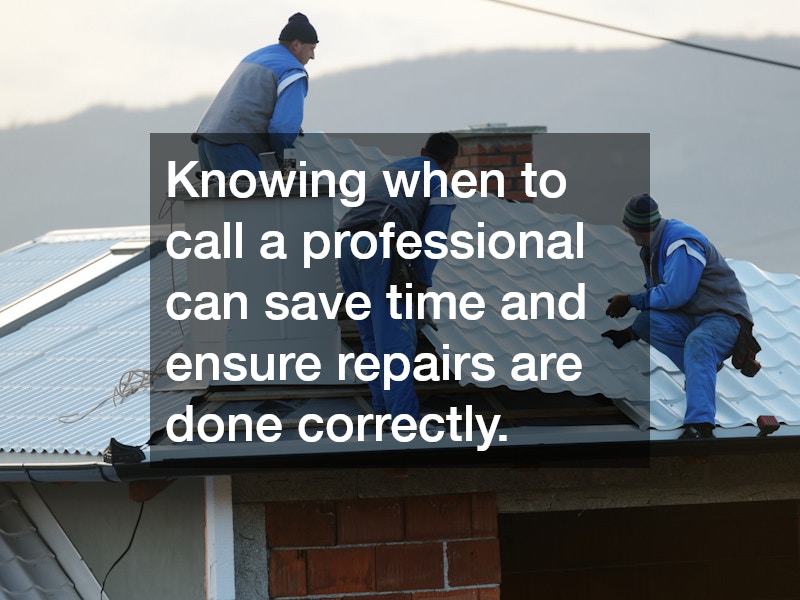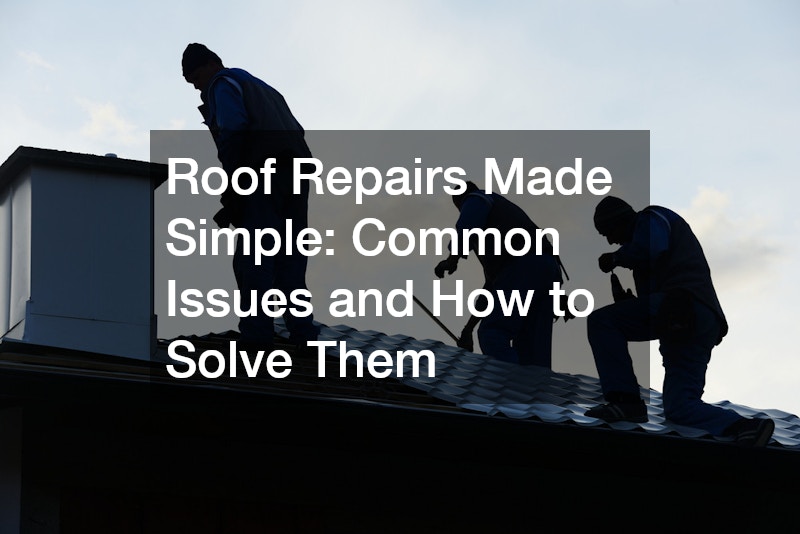Your roof is your home’s first line of defense against the elements, protecting your family, belongings, and property from rain, wind, and sun. Despite its importance, it’s easy to overlook small problems until they become costly repairs. Understanding common roofing issues and how to address them can save you both money and stress. In this guide, we’ll break down frequent roofing problems and provide practical solutions, making roof repairs simple for homeowners.
Signs of Roof Damage
A critical step in maintaining your roof is knowing when damage has occurred. Some signs are obvious, while others require closer inspection.
Leaks inside your home, missing or broken shingles, and sagging areas are all clear indicators that your roof may need attention. Even minor issues like curled shingles or granules in gutters can signal early wear and tear.
Regular roof inspections, ideally twice a year and after severe weather, can help catch problems before they escalate. Pay particular attention to areas around chimneys, skylights, and vents, as these are common spots for leaks. Detecting damage early not only protects your home but also reduces the need for extensive repairs down the line.
Common Roof Problems and How to Fix Them
Several roofing issues frequently appear across different types of homes. Addressing these problems quickly can prevent minor damage from turning into major expenses. Understanding the causes and solutions for these common problems can help homeowners take timely action and protect their investment.
Leaking Roofs
Leaks are among the most common roofing problems and can stem from damaged shingles, poor installation, or worn flashing around vents and chimneys. To fix a leak, start by locating the source. Replace damaged shingles, seal gaps around flashing, and apply roofing cement to smaller cracks. For extensive leaks, calling a professional ensures the repair is durable and prevents further water damage to your home’s structure.
Damaged or Missing Shingles
Shingles can deteriorate due to age, storms, or high winds. Missing shingles not only affect the roof’s appearance but also expose the underlayment to water damage. To replace a shingle, gently lift the surrounding shingles, remove nails from the damaged one, slide in a new shingle, and secure it with roofing nails. Regularly inspecting your roof after storms can help identify these problems early.
Clogged Gutters and Poor Drainage
Gutters play a crucial role in diverting water away from your roof and foundation. When gutters become clogged with leaves or debris, water can back up, causing leaks or even structural damage. Cleaning gutters at least twice a year, installing gutter guards, and checking the slope can prevent these issues. Proper drainage reduces the likelihood of roof rot and extends the life of your roofing materials.
Sagging Roof Sections
Sagging can indicate serious structural problems, often caused by water damage, weak decking, or excessive weight from snow and debris. A sagging roof requires immediate attention from a professional, as it can lead to partial collapse. Temporary measures, such as supporting the affected area with braces, can provide short-term relief, but professional assessment and repair are critical for long-term safety.
Preventative Maintenance Tips
Preventing roofing issues is often simpler and less expensive than fixing them. Regular inspections, timely repairs, and maintenance practices such as cleaning gutters, trimming overhanging branches, and checking for early signs of wear can extend the life of your roof. Applying roof sealants and coatings can also help protect shingles and underlayment from moisture and UV damage.
Another helpful strategy is maintaining proper attic ventilation. Poor ventilation can lead to heat and moisture buildup, causing shingles to deteriorate faster. Ensuring your attic has adequate airflow helps regulate temperature, prevents ice dams in winter, and minimizes the risk of mold growth.
When to Call a Professional
While many minor roofing problems can be addressed by handy homeowners, some issues require professional expertise. Extensive leaks, large areas of damaged shingles, sagging sections, or complex roof designs are best handled by licensed roofing contractors. Professionals have the right tools, safety equipment, and experience to perform repairs efficiently and prevent future problems.
Knowing when to call a professional can save time, prevent injury, and ensure repairs are done correctly. Even if you enjoy DIY projects, prioritizing safety and long-term results is essential when dealing with your roof.
Roof repairs don’t have to be intimidating. By understanding common issues like leaks, damaged shingles, clogged gutters, and sagging sections, homeowners can take proactive steps to maintain their roofs. Regular inspections, preventative maintenance, and knowing when to involve professionals can simplify the process and protect your home for years to come. Remember, addressing small problems early not only saves money but also ensures your roof continues to provide reliable protection for your family and belongings. Making roof repairs simple is less about complex procedures and more about staying vigilant and informed.

